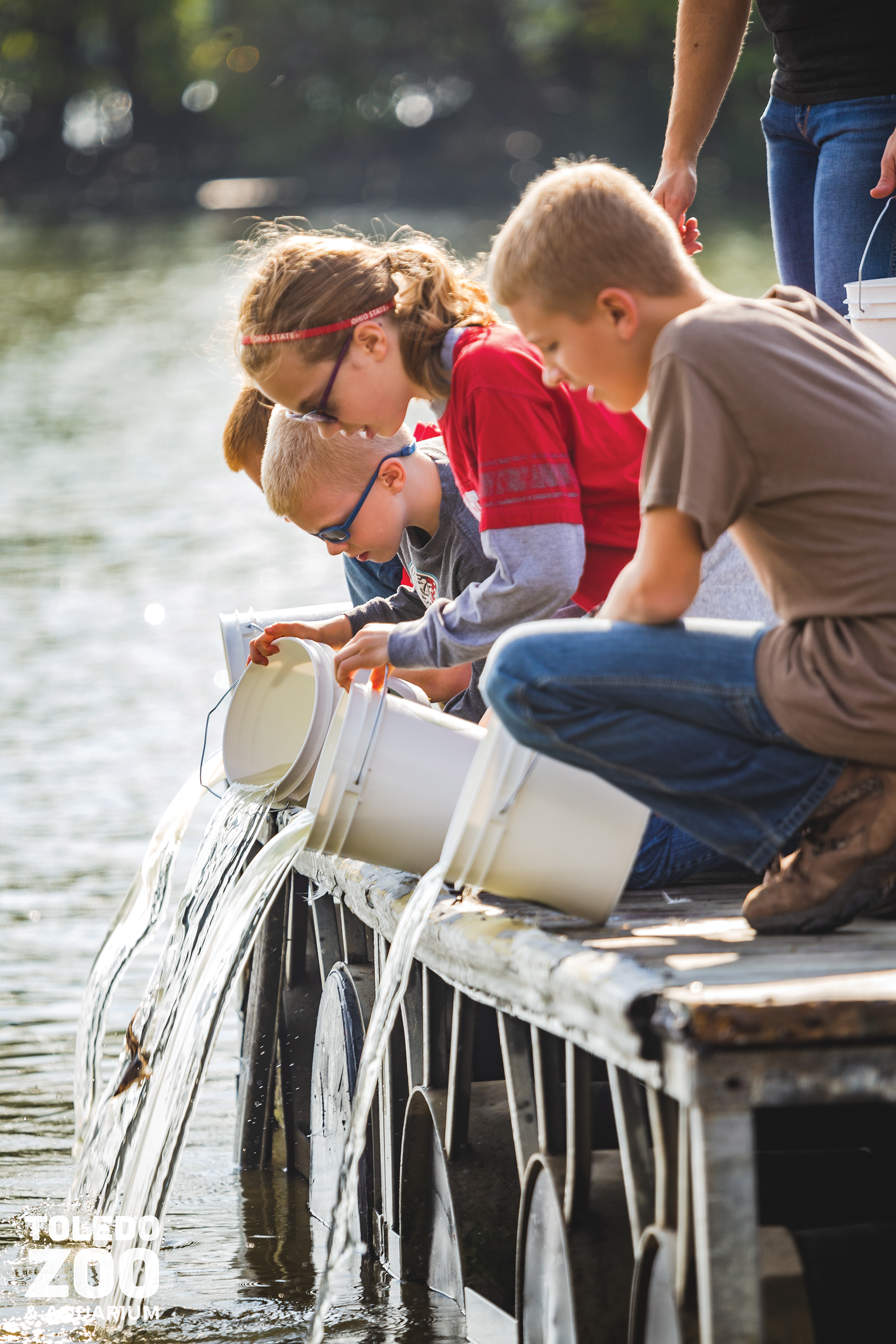Lake Sturgeon populations in the Maumee River were stable and plentiful at one time, but began to drastically decrease due to overfishing, habitat degradation, and limited access to spawning grounds (Eckes, 2018). Lake Sturgeon were declared endangered by the Ohio Division of Natural Resources and conservation efforts have come to fruition (Mertz, 2012). Lake Sturgeon are the largest fish native to the Great Lakes region, commonly found up to six feet in length (Mertz, 2012). They have no scales, but bony plates line the length of their body and rough skin. They play a critical role in their environment by consuming decaying organisms and benthic organisms, including invasive zebra mussels and quagga mussels (Pignataro, 2013). Scientists evaluated fishing regulations, habitat availability, food availability, and reproductive needs before implementing their reintroduction plan (Eckes, 2018). The reintroduction of Lake Sturgeon is actually putting them back into the Maumee River where they once lived. Scientists determined that the Maumee River is suitable habitat based on the level of sedimentation and velocity of the water (Williams, 2019). Additionally, the Maumee River holds ample food resources and the spawning grounds are relatively unimpeded by dams with appropriate flow regimes (Williams, 2019). When all conditions were compatible with reintroduction into the Maumee River, they proceeded with their action plan.
As part of the Lake Sturgeon reintroduction plan, approximately 1500 Lake Sturgeon were raised in a hatchery trailer near the Toledo Zoo using water from the Maumee River and another 1500 were raised at Genoa National Fish Hatchery with hatchery-supplied water (Eckes, 2018). Lake Sturgeon return to their natal streams to reproduce when they reach maturity. Males mature at about 15 years of age, but females take about 25 years to mature (Williams, 2019). All Lake Sturgeon suitable for release into the Maumee River will be PIT tagged and monitored (Eckes, 2018). A select few individuals were tagged with acoustic monitors for advanced monitoring (Eckes, 2018). The difference in the water supply source will help scientists to determine the importance of natal imprinting on hatchery raised Lake Sturgeon when these individuals reach maturity and return to their natal spawning grounds (Eckes, 2018). Additionally, scientists will be able to monitor the growth and survival to see if there are any differences between Lake Sturgeon raised at these two different sites. The determination as to whether this reintroduction is truly successful will not be known for more than 25 years because scientists need to see if mature hatchery Lake Sturgeon will be able to naturally support their own population through reproduction.


This reintroduction of Lake Sturgeon to the Maumee River brought awareness to the public by giving them the opportunity to sponsor a Lake Sturgeon that is being released and providing resources to learn more about this amazing fish. Anyone that gives a donation to sponsor a Lake Sturgeon is given the opportunity to release it into the Maumee River and will be notified if their Lake Sturgeon is recaptured in the future (Hageman, 2018). Additionally, the Toledo Zoo and hatchery trailers will be open to the public to learn more about Lake Sturgeon reintroduction and conservation (Eckes, 2018).

References:
Eckes, O. (2018, September 27). First Stocking of Lake Sturgeon into the Maumee River Scheduled for October 2018. Retrieved from https://www.fws.gov/Midwest////////Fisheries/fishlines-2018-09-27/feature1.html.
Hageman, J. (2018, October 1). First Maumee River lake sturgeon to be released. Retrieved from http://www.sanduskyregister.com/story/201809270019.
Mertz, M. (2012). Lake Sturgeon. Retrieved from http://wildlife.ohiodnr.gov/species-and-habitats/species-guide-index/fish/lake-sturgeon.
Pignatatro, T. (2013, September 7). Sturgeon battles back to repopulate Lake Erie, lower Niagara River. Retrieved from https://buffalonews.com/2013/09/07/sturgeon-battles-back-to-repopulate-lake-erie-lower-niagara-river/.
Williams, S. (2019, January 1). The sturgeon restoration study’s outcome won’t be known for decades. Retrieved from https://www.the-scientist.com/notebook/a-project-aims-to-reestablish-an-ancient-fish-in-an-ohio-river-65234.
